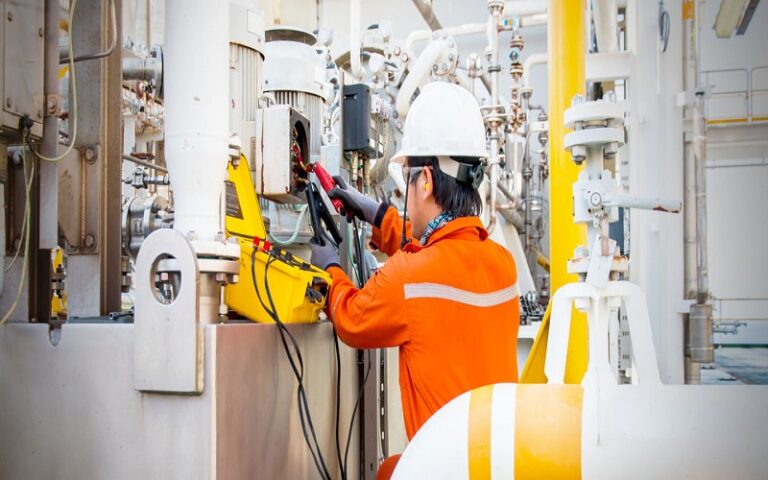Commodities in the market like gold, silver, crude oil, natural gas etc. offer lucrative trading opportunities. However, commodity trading also carries significant risks that need active management. Here are the 7 key risks that commodity traders must control
Price Risk
Price risk is possibly the most obvious risk involved in the trading of commodities. The price of commodities is influenced by a variety of variables, including demand and supply dynamic, geopolitical events as well as weather conditions and economic changes. These variables can cause extreme price swings that could affect traders’ profit.
To reduce the risk of price fluctuations traders may employ various strategies for hedging, including options and futures contracts. These financial instruments permit traders to secure the prices of future delivery, which reduces their risk of being affected by price volatility. In addition, being aware of the latest market developments and news can aid traders in anticipating price changes and make more informed trade choices.
Market Risk
Market risk is the general risk associated with the commodity markets, which includes the possibility of market-wide disruptions as well as systemic breakdowns. These incidents can result in a cascading effect on prices for commodities as well as the positions of traders.
To reduce the risk of market volatility diversification is essential. The traders should not put all their money into a single market or commodity. Instead traders should distribute their capital over a variety of markets and commodities to minimize the effect of any negative circumstances. In addition, you should stay informed about the latest developments in market regulation and regulatory reforms that could aid traders in adapting to changing market conditions. You must also learn how to learn stock trading in India in order to make better trade without any wrong influences.
Credit Risk
Credit risk arises when one party in a commodity trade fails to meet its financial obligations. This can happen if a counterparty defaults on a payment or goes bankrupt. Credit risk can result in substantial losses for traders, especially if they have large and unsecured positions with unreliable counterparties.
To manage credit risk, traders should conduct thorough due diligence on their trading partners and counterparties. This includes assessing their financial stability and creditworthiness. Moreover, traders can use risk mitigation tools like letters of credit or collateral agreements to ensure that they receive payments even if the counterparty encounters financial difficulties.
Operational Risk
Operational risk refers to the numerous dangers that are inherent to the day-to-today operation of a commodity trading company. This includes errors in the execution of trades, technological problems, fraud, and violations of compliance. Operations failures can cause substantial financial losses, and can damage the reputation of a trader.
To reduce the risk of operating, traders must establish rigorous internal procedures and controls. This includes ensuring that the trading systems are safe and reliable by conducting regular audits and ensuring adequate training for employees. Implementing contingency plans for different operational scenarios could assist in minimizing the effects of unplanned incidents.
Liquidity Risk
Liquidity risk arises when traders are unable to buy or sell commodities at the desired quantity and price due to a lack of market participants. Illiquid markets can result in unfavorable price slippage and difficulty exiting positions.
To manage liquidity risk, traders should carefully consider the liquidity of the commodities they trade. Liquid commodities have more participants, making it easier to execute trades without significantly impacting prices. Traders should also have a clear exit strategy and be prepared to adapt their trading approach when faced with illiquid markets. Nowadays, the online share trading app makes the process fast & reliable.
Regulatory Risk
Regulatory risk refers to the risk of changes in government regulations and policies that can impact commodity trading activities. Governments can introduce new regulations, taxes, or restrictions that affect the trading environment and profitability.
To mitigate regulatory risk, traders should stay informed about relevant laws and regulations in the regions they operate. Compliance with these regulations is crucial to avoid legal issues and potential fines. Additionally, traders should engage with industry associations and advocacy groups to influence regulatory decisions and provide input on proposed changes.
Environmental and Social Risk
In recent years, environmental and social risk has gained significant attention in commodity trading. The risk is related to the effect of trading and production of commodities on the environment, local communities and social practices. A greater amount of scrutiny in this field could result in the damage of reputation and even disruptions in operations for traders.
To address environmental and social risk, traders should adopt sustainable and responsible trading practices. This includes adhering to environmental regulations, supporting ethical supply chains, and promoting fair labor practices. A commitment to environmental and social responsibility can not only mitigate risk but also enhance a trader’s reputation and market position.
Conclusion
Commodity trading offers alluring profit potential but also significant risks. Following prudent position sizing, using stop losses, diversifying assets, and avoiding over-leverage are important risk management practices. Traders should also keep emergency funds to withstand periodic losses from unavoidable systemic shocks that hit all financial markets. Robust risk control and survival instincts differentiate successful commodity traders from casual speculators.


















+ There are no comments
Add yours